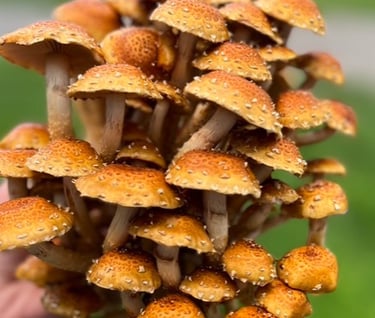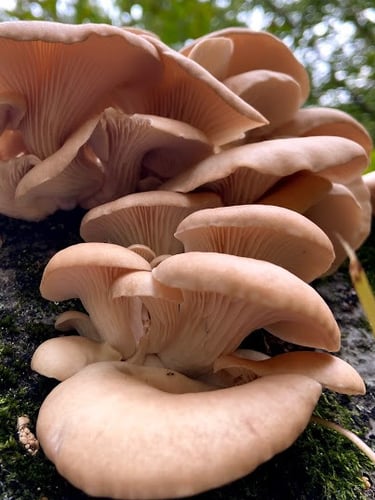Meet the Mushrooms!
Not the typical mushrooms you see in the grocery store.
These fresh, flavorful mushrooms will be a unique addition to your dinner plate.
Packed with protein, vitamins, minerals, anti-inflammatory properties, and many other nutritious benefits, they are a great choice for your health.
They make a wonderful meat or protein replacement for our vegan and vegetarian friends out there!
Discover Our Local Mushroom Farm: Fresh Exotic Mushrooms Cultivated & Wild-Foraged here in NJ
Culinary Mushrooms
Medicinal Mushrooms

Pleurotus ostreatus
Oyster mushrooms are a rich source of antioxidants, vitamins, minerals and all essential amino acids. They also provide antimicrobial, anti-inflammatory and free-radical fighting properties to help reduce disease and promote overall health.
Research has shown extracts of pleurotus ostreatus, oyster mushroom, can minimize the growth of colon and breast cancers in a study by Zaw Min Thu.
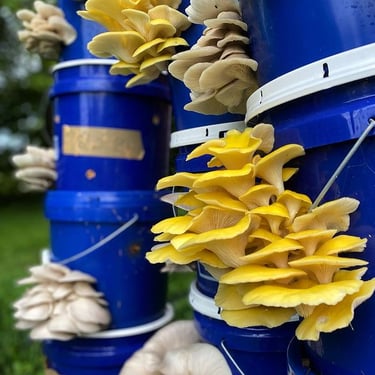

Oyster Mushrooms are named for their smooth, shell-like appearance and can range in color from white or blue-ish gray to pink and even yellow (P. ostreatus, P. ostreatus flamingo, P. citrinopileatus, respectively).
The most common type, white or blue, have a mild flavor and will take on strong flavors they are paired with, such as garlic, ginger or fresh herbs. Depending on cultivar they can have a licorice-like aroma to a more earthy, brine-y odor.
With one of the shortest shelf lives of mushrooms, oysters last 3-7 days, depending on freshness and should be kept in a loosely closed paper bag inside the fridge. The main indicator for spoilage is a musty odor. They may also shrivel or dry up, depending on humidity levels.
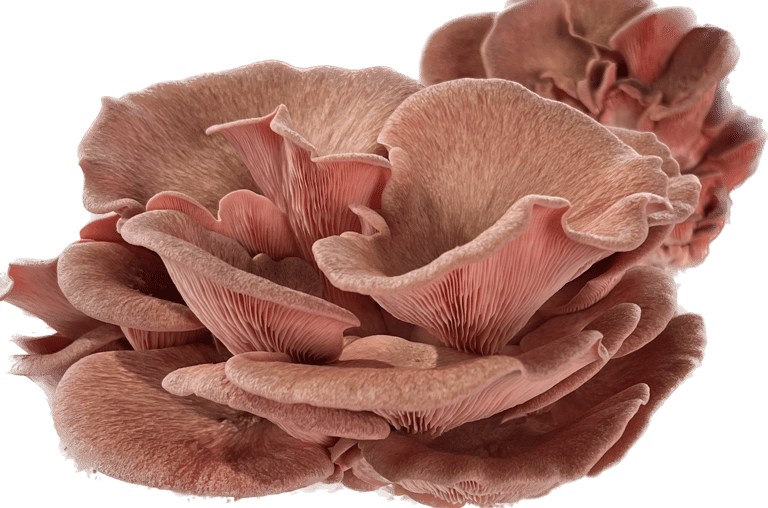

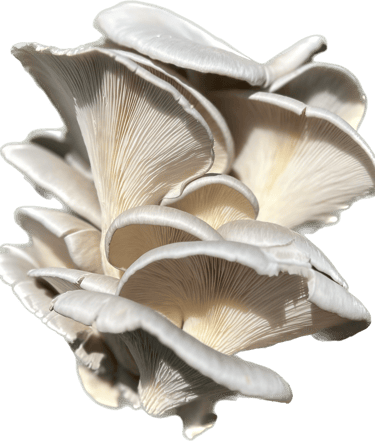

Increasing the consumption of oyster mushrooms appears to decrease the risk of obesity, diabetes, cancer, heart disease, and increase immune function.
Oyster mushrooms have a nutty, subtle flavor that goes well in soups, stews, and sauces, but the most common form of preparation is a simple saute with herbs, garlic and butter.
Oyster Mushroom

Lions Mane
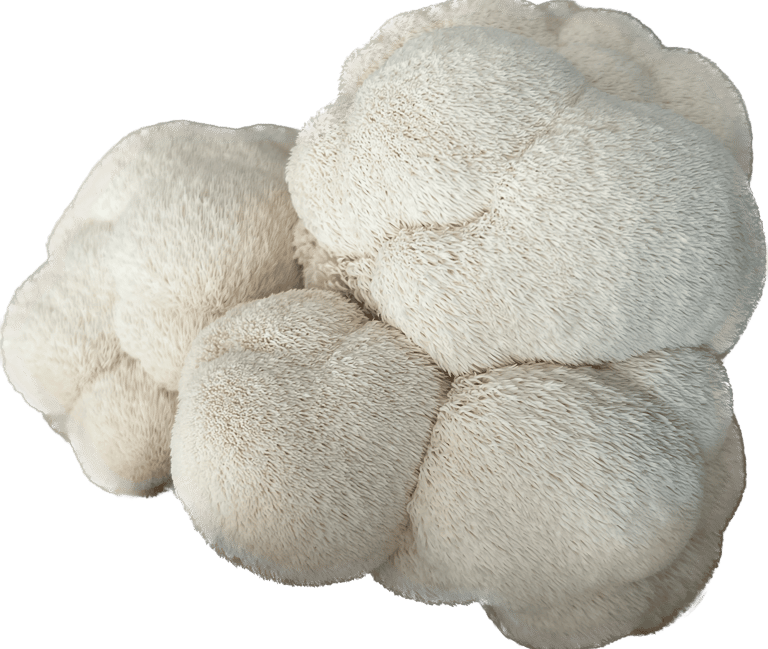

Not only boasting in flavor, the Lions Mane has renowned health benefits including increased cognitive brain function, blood sugar control, reduced risk of heart disease, and may even help with anxiety and depression.
Also contains high amounts of powerful antioxidants and anti-inflammatory compounds that support immune function
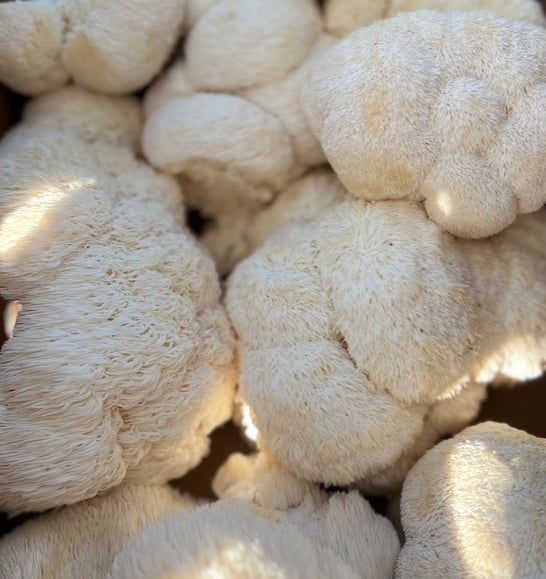

Extensive research is being done about the neurotrophic properties of lions mane. (J Tradit Compliment Med. 2013)
Test-tube research experiments show that lion's mane extract can kill cancer cells and slow the spread of tumors, however clinical trials are yet to be done. (source)
Some studies have shown that Lions mane can help stimulate growth of brain cells. (Int. J Med Mushrooms 2019)
I also find lions mane to be a gourmet treat! The fine hairs crisp up nicely in a frying pan and the mushroom had a similar texture and flavor to crab meat especially when flaked or shredded.
Hericium erinaceus



The chestnut mushroom is a unique addition to the dinner plate due to its nutty and earthy flavor profile and it adds a surprisingly crunchy bite. This mushroom is one of our most popular for new comers to try because of it's eye-grabbing color display, but it remains popular because it tastes as good as it looks!
You can expect the caps to be sticky, this is a distinctive trait of all Pholiota species like its cousin the Nameko mushroom.
Chestnut mushrooms are our absolute favorite pizza mushroom. They also provide an excellent addition to stir fry, sandwiches, creme sauces, miso and soup!
Check out some recipes below!

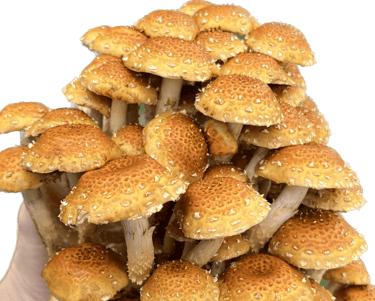

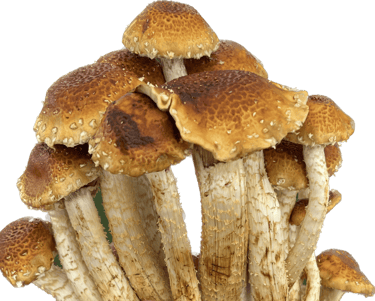
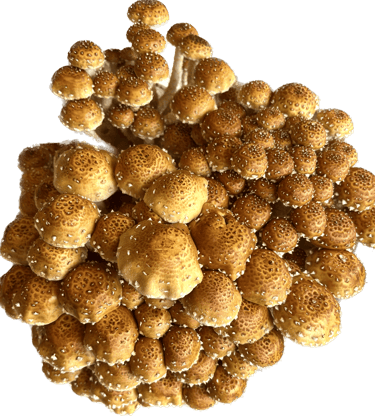

Chestnut Mushroom
Pholiota adiposa


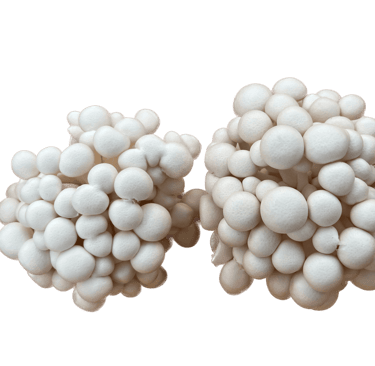
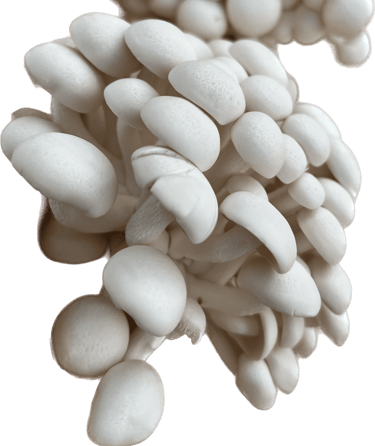

Beech Mushrooms
"Hon-Shemji"
Both white and brown beech mushrooms offer a crispy texture with a mild sweet-nutty flavor and umami punch.
These mushrooms are great roasted or sautéed, just be sure to allow enough time for them to crisp up. Beech mushrooms also provide a great finish to soups, stews and sauces.
Although online sources say you can eat beech mushrooms raw, for your safety we suggest cooking all mushrooms thoroughly before ingesting. Also note that the flavor is enhanced and nutrients are more readily digested when cooked.
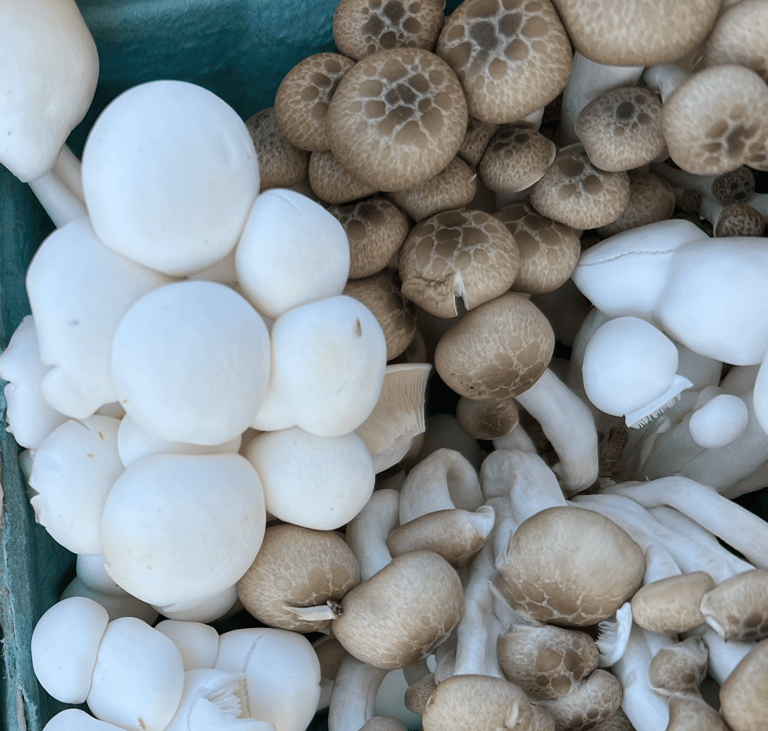

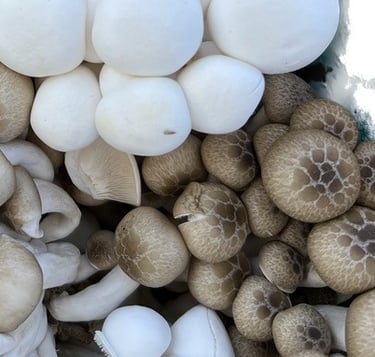

Hypsizgus tessellatus

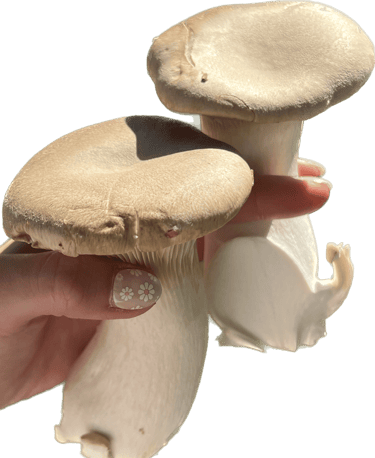

King Oyster
Also known as the Trumpet oyster, this pleurotus species has a thick dense stem that lends itself beautifully as a sliced medallion, creating a scallop-like texture. The flavor is more nutty and less earthy than other oyster species.
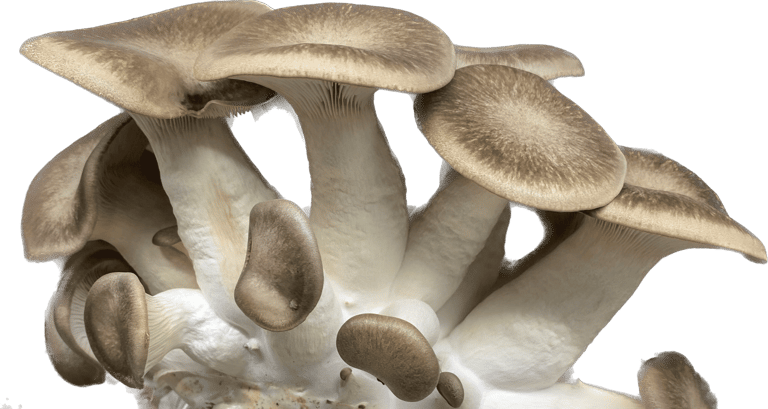

As with all other oyster varieties, they are high in vitamins & minerals, protein, amino acids and are packed with immune boosting properties.
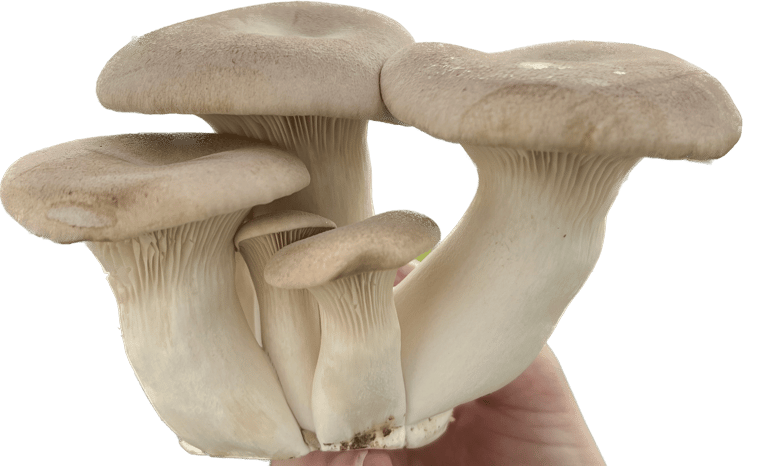

Pleurotus eryngii

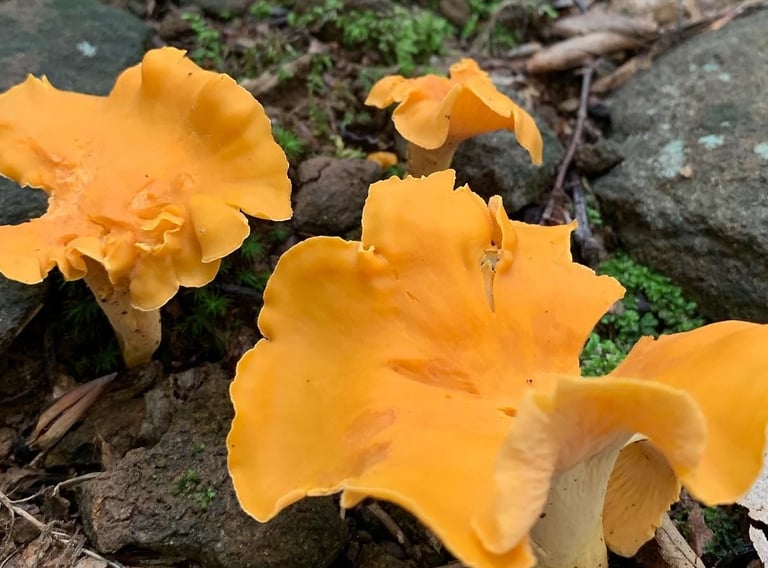

Chanterelle
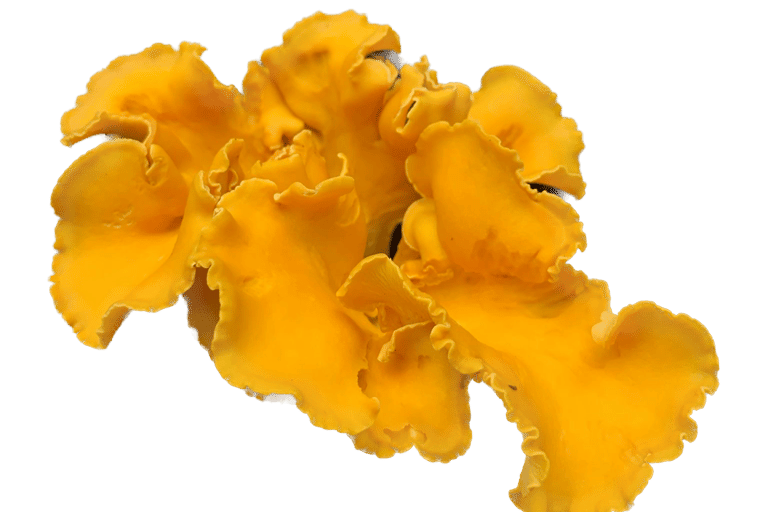



Chantharellus cibarius
Bright orange to yellow in color and sometimes white. The two most distinctive features of the chanterelle are the mild fruity scent, resembling apricot, and the false gills and decurrent pattern. This means they do not have true gills but folded ridges that start at the wavy edges and extend down the stem.
They fruit locally in central New Jersey from early July to late September depending on the weather. When you find one you will surely find another because these mycorrhizae tend to fruit in large clusters.
They have a smooth matte texture and grow terrestrially in old growth forests, typically by a stream or river.
Our European clientele adore this mushroom because a similar species grows throughout south, central, and eastern Europe. It is used in many traditional dishes, but most popularly paired with pasta.

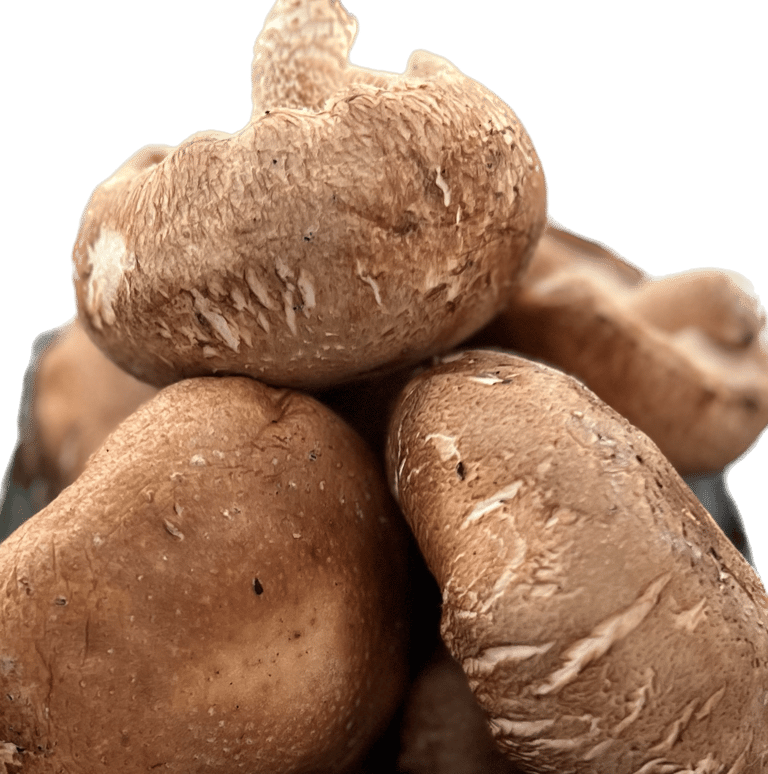

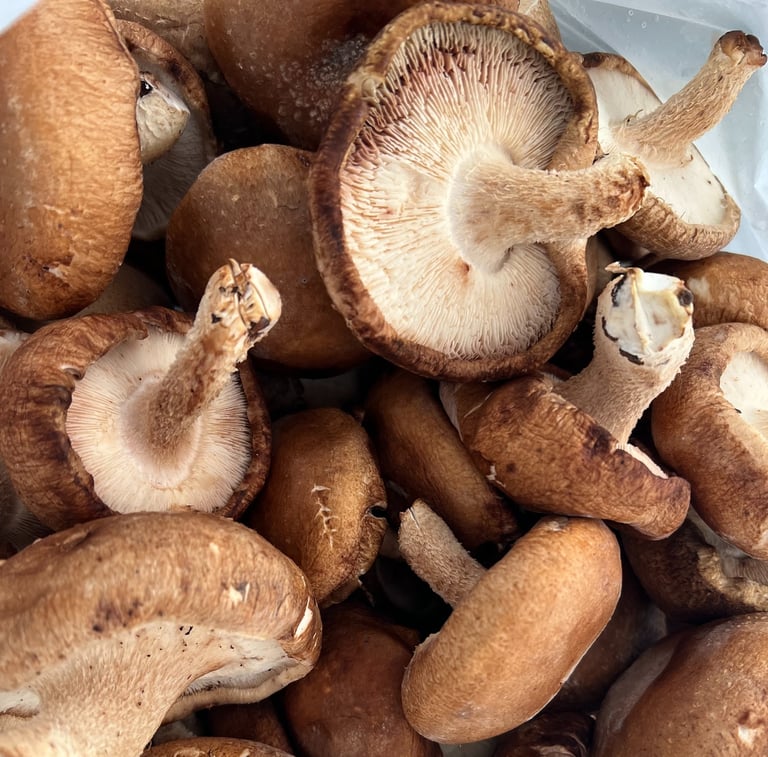

Shiitake
This umami powerhouse boasts a bold earthy flavor and makes for a great meat substitute!
Shiitake are a great source of beta-glucans that help reduce heart problems by lowering cholesterol levels. They are also rich in vitamins and minerals, specifically vitamin D
These mushrooms can be incorporated in a variety of cooking styles other than Asian, like Italian, Eastern European, and Americana. Try substituting it for meat in a cheesesteak or skewer it on a kebab with your favorite vegetables.
Let your culinary imagination go wild!

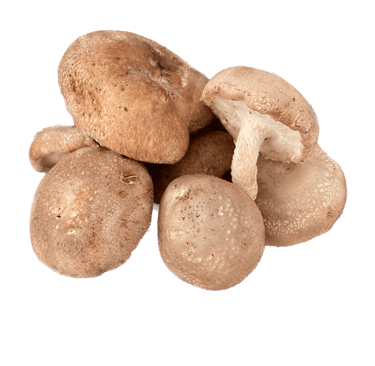
Lentinus edodes

Pioppino
Also known as black poplar or velvet pioppino, these mushrooms are known for their smooth brown cap and long white stems. The skinny stems can provide a lovely crunch with a meaty, slightly sweet and earthy flavor.
Pioppinos have high amounts of metabolites providing anti-fungal properties. They are also rich in copper, fiber and vitamin b5.

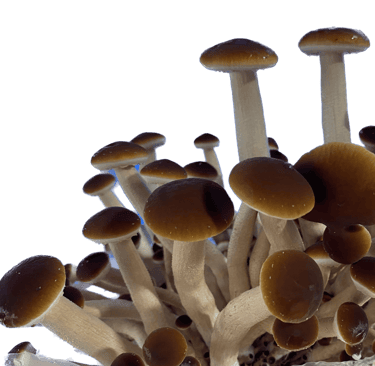
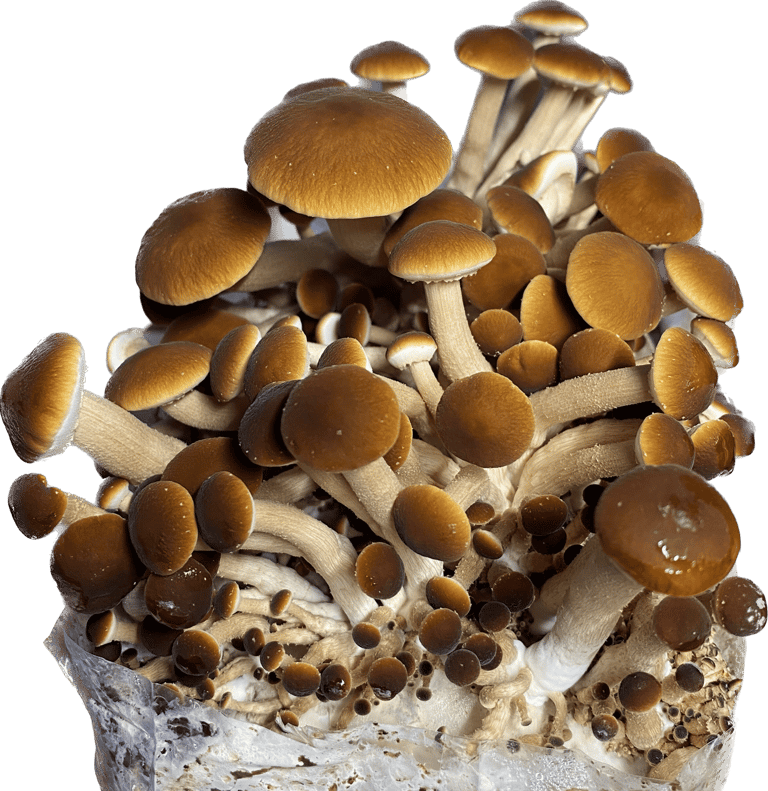

Pioppinos can be a great addition to pastas, soups, stews and sauces. They have a firm texture that won't easily get lost, making them a great pair for risotto or braised dishes.
Agrocybe aegerita

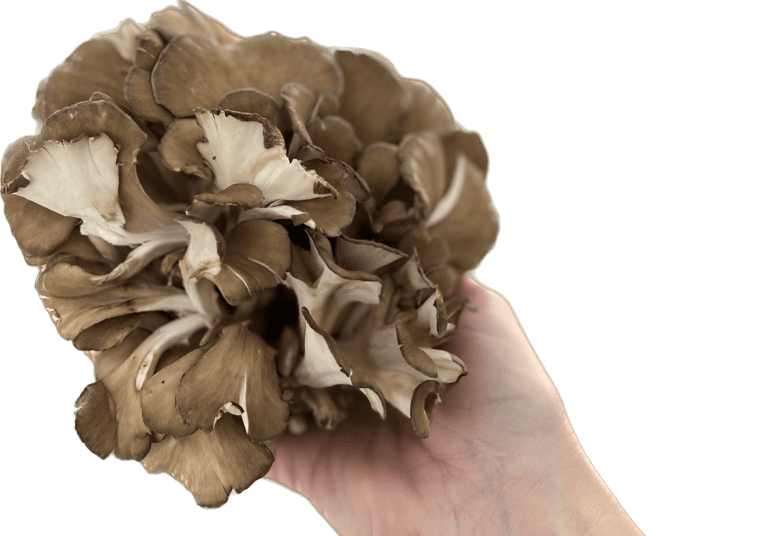

Maitake - "Hen of the Woods"
Maitake or hen of the woods mushroom is a common wild foraged delicacy and can range greatly in size. With a Japanese origin, the name translates to "dancing mushroom"; with a dense base, the fruiting bodies grow into wavy clustered "rosettes" with many overlapping layers.
These mushrooms are an excellent meat alternative due to their strong earthy, meaty, peppery flavor.
High in beta-glucans and antioxidants, they help strengthen the immune system as well as benefit the digestive tract with their rich source of potassium and fiber. Maitake is also a core component of our Forager's Five immune-boosting tincture which includes five of the most potent local medicinal mushrooms: Chaga, Lion's Mane, Maitake, Reishi, and Turkey Tail.
This is a versatile mushroom that can be used in many different culinary applications. With their strong flavor they can hold up to other bold flavors like garlic and soy. Delicious in a simple stir fry or sautéed with pasta, they can also be turned into a "steak" or can be cooked down to add a unique earthy flavor to stews, sauces and soups.
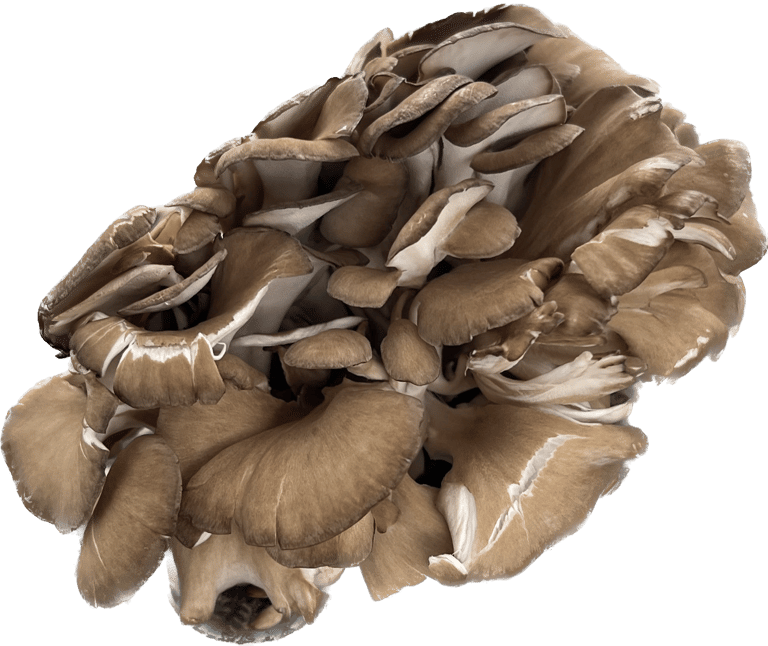

Grifola frondosa

Chicken of the Woods
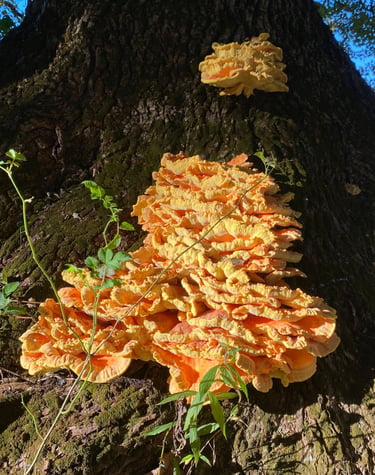

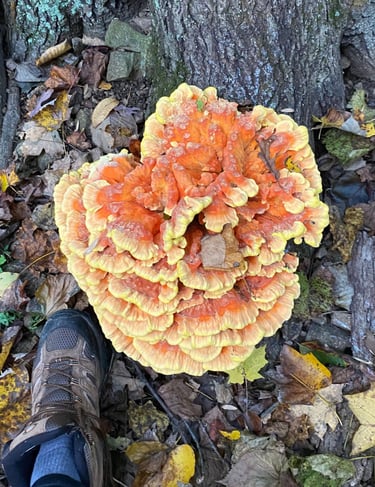

Laetiporus sulphureus
These mushrooms have high amounts of Vitamin C & A, and have shown anti-fungal and antibiotic properties.
It has a mild flavor, some say also resembles chicken depending on the preparation. We like to substitute it for chicken in classic dishes such as chicken fingers, teriyaki, or fajitas.
DISCLAIMER You must thoroughly cook this mushroom prior to ingestion: Laetiporus species can cause stomach upset in some people, as a precaution start with ingesting a small (cooked) amount first
Chicken of the wood mushrooms are a great starter mushroom to try, since they have a mild earthy flavor and a similar texture to chicken breast, which explains the name.
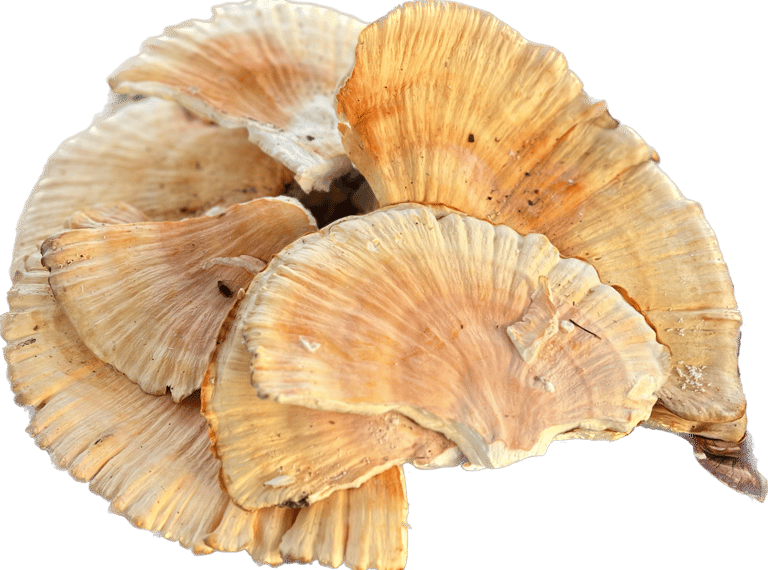

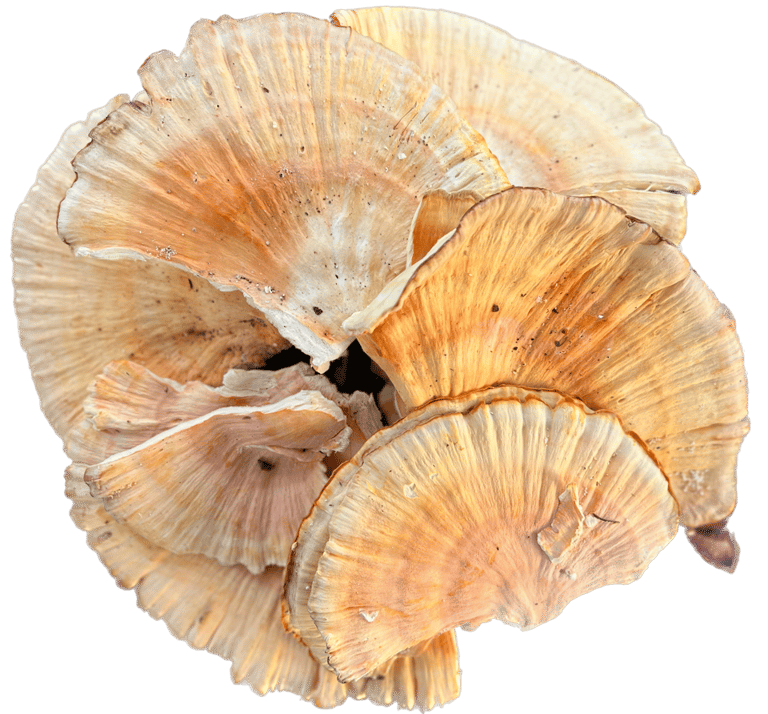

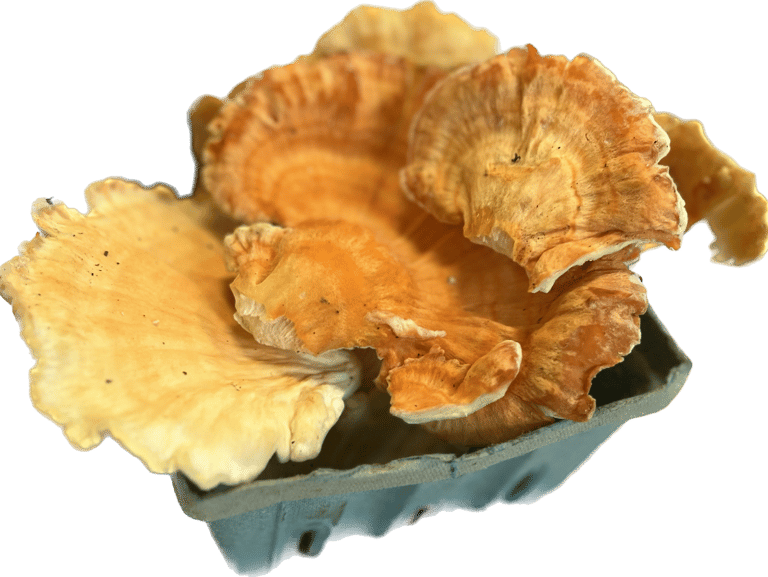

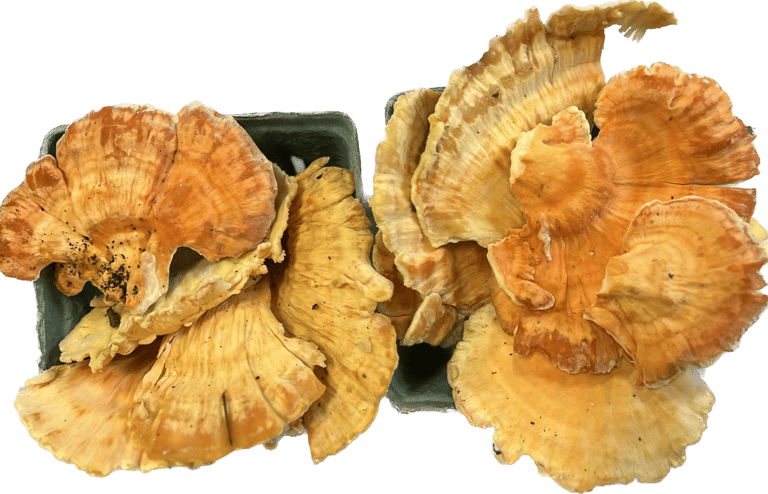


Lobster Mushrooms
Lobster mushrooms are coined their name due to their lovely red color and surprisingly shellfish-like odor. The taste is closer to a mild white-fish than lobster (try lion's mane mushroom for a savory lobster like flavor).
The unusual red color is the result of the H. lactiflourum fungi parasitizing common Lactarius or Russula species. The fungi transforms pretty bland edibles like R. brevipes into highly sought after mushroom delicacies.
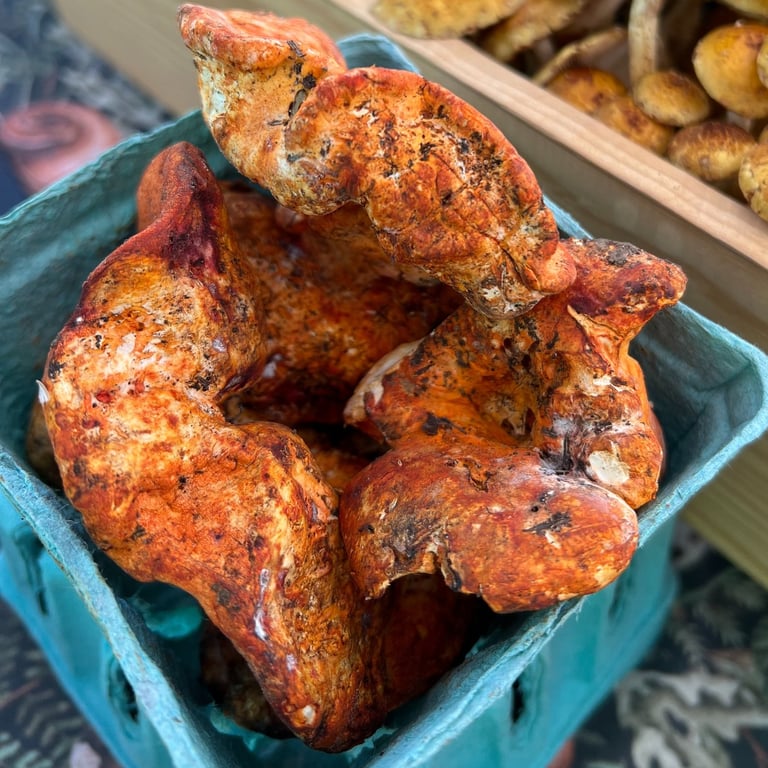

Hypomeces lactifluorum

Nameko

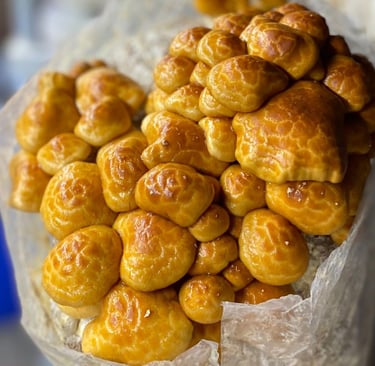
Nameko mushrooms are a widely-adored Japanese mushroom with a nutty, slightly sweet flavor. They can have a buttery scent with a sticky cap residue similar to the chestnut mushrooms. This is a distinguishing feature among all mushrooms in the Pholiota genus.
Preferring the cool weather of fall in its native habitat, we only grow this mushroom from late fall to early springs. We are always excited when nameko season comes around!
Pholiota microspora
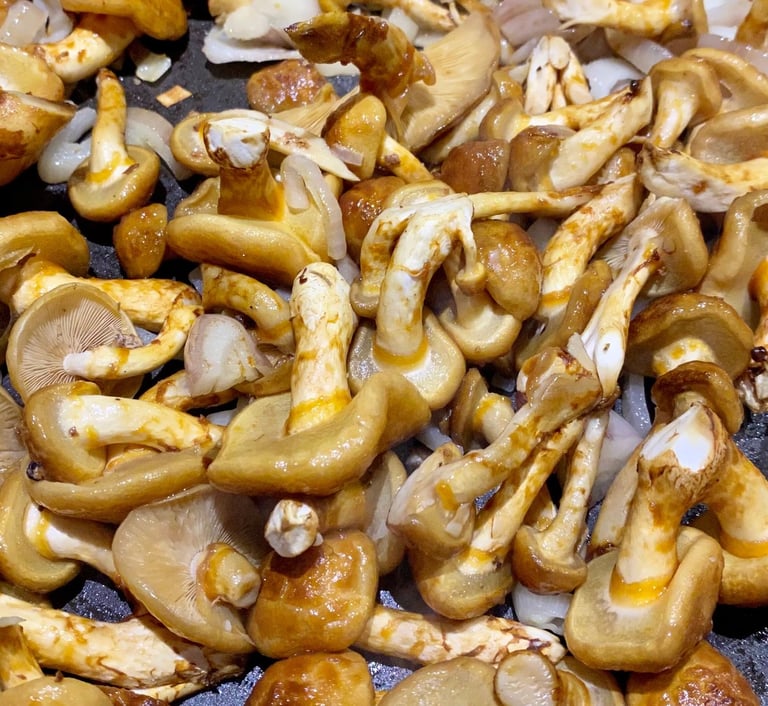

We like to use this mushroom in many of the same ways we use chestnut mushrooms such as on pizza, in stir-fry, or over a steak. The heartiness of the cap and stem also lend well to use in soup or a traditional Japanese ramen.
Like shiitake mushrooms, namekos are well-endowed with vitamin D. Another good reason to enjoy it in the winter.

Black Pearl King Oyster
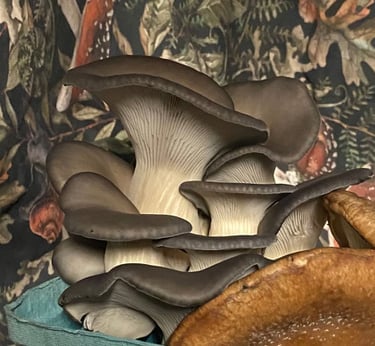

Pleurotus ostreatus-hybrid
The black pearl king oyster is a hybrid between the European pearl oyster and Asian king oyster varieties, resulting in a gorgeous best of both world situation.
The incredibly savory and earthy flavor of the pearl oysters with the robust full bite we enjoy from the king oyster.
These oysters are incredibly versatile. They can be cut into discs and pan-fried or roasted like a scallop. A lovely treat when cut into strips, brushed with olive oil and thrown on the grill. Perhaps breaded and fried like a cutlet and made into an old classic like chicken parmigiana. Try pulling them with a fork and cooking with your favorite BBQ sauce to create a pulled oyster mushroom sandwich. The possibilities are endless.
Similar to other oyster species, the black pearl is also high in protein, vitamins, minerals, and retains anti-inflammatory properties
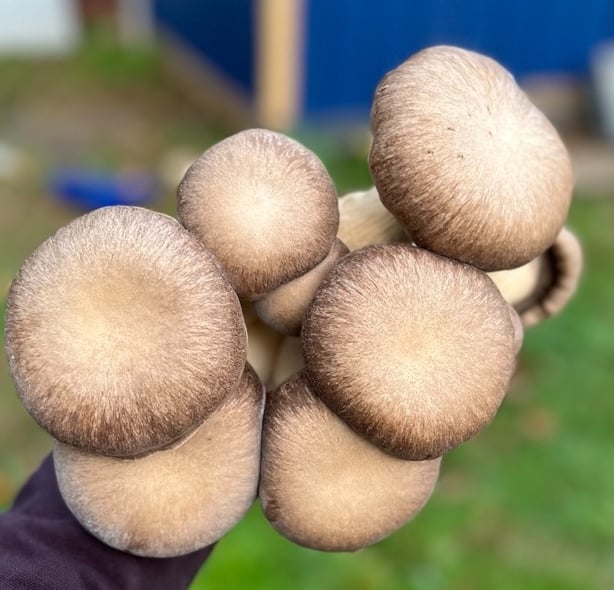


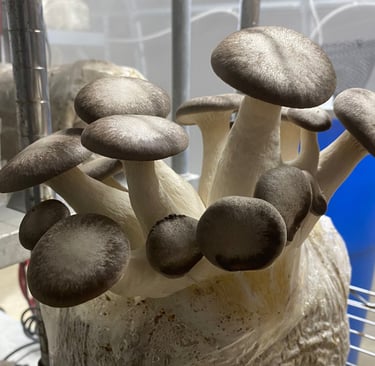

Morel Mushrooms
Morel mushrooms are a unique and highly desired mushroom, with an unrivaled earthy, nutty flavor.
There are two common and agreed upon species in the central NJ area, the blonde and the black. Blonde morels tend to have larger caps and have a more yellow ridges that match their piths better than the black which have much darker piths. All morels have hollow stems and hollow caps which is a good distinguishing feature from "false morels".
Morels are a tasty delicacy that lend themselves to many different types of recipes. We like to keep it simple and really enjoy the fruits of our foraging labors with garlic, onions, and green beans. Many prefer making white wine for cream sauces.


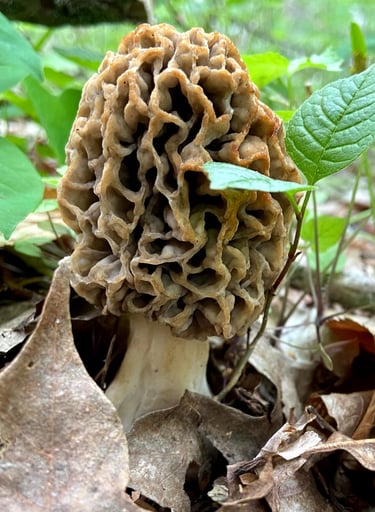

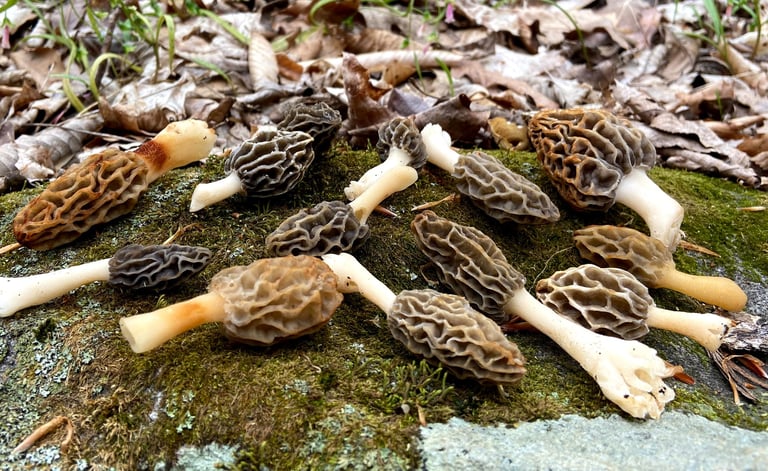

Blonde: Morchella americana Black: Morchella angusticeps

Honey Mushrooms
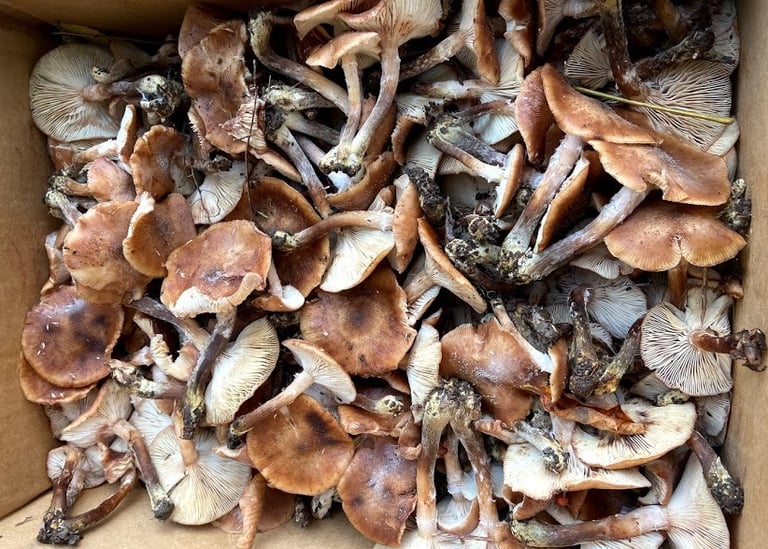

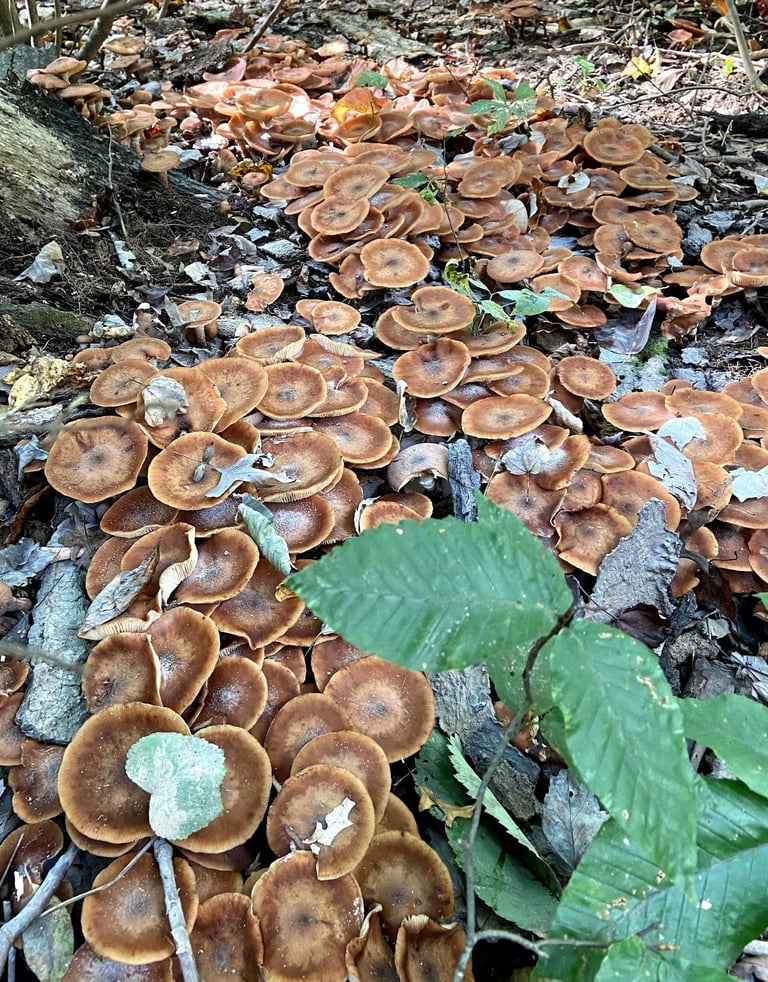

This is a tasty earthy fall treat, but it does require par-boiling to remove harmful toxins. Since they grow in massive clusters its easy to pick through and get the firmest and the freshest of the bunch. When sautéed, it has a similar flavor to shiitake. Great for pastas or risotto.
Brown, but varying widely in color value, and convex cap that turns up to umbonate as it matures, 2-7” diameter. Growing in clusters terrestrially. The gills are white to yellowish and sometimes adnate, decurrent, or notched. The mycelium is black rather than white. Because of all its variability in physical appearance, it is not considered safe for beginner foragers.
Armilleria mellea
A. mellea grow an unusual black-stranded mycelium that parasitize and kill living hardwoods trees. The mycelium extends into the soil surrounding the tree where the mushrooms come up in the fall.

Reishi
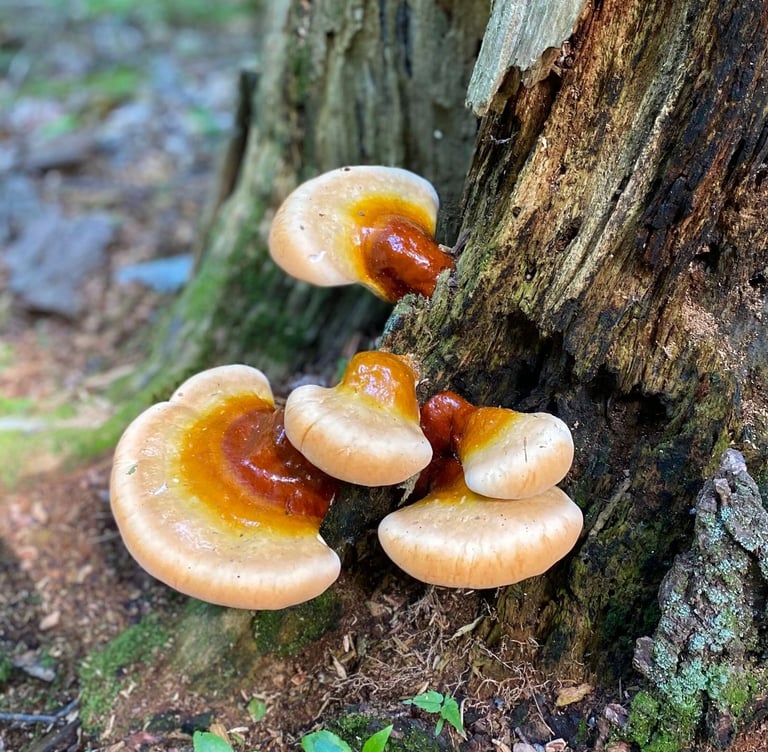

Ganoderma tsugae
"The Mushroom of Immortality"
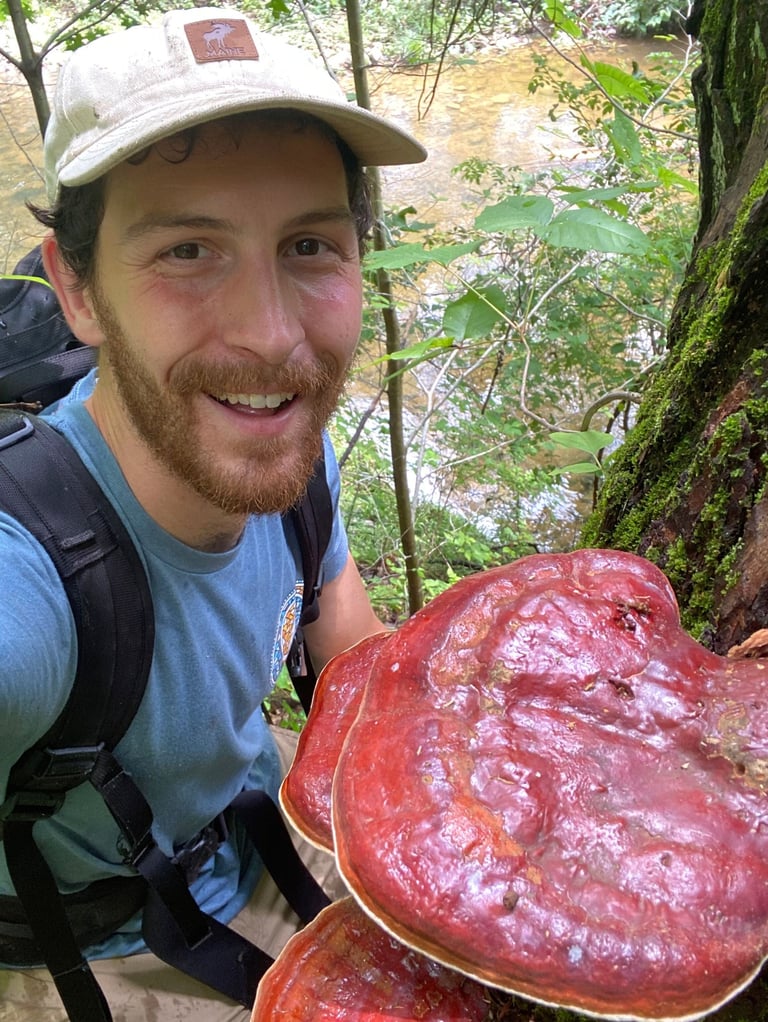

Our native reishi is used in our various tea blends which add flavor and other adaptogenic and medicinal herbs. Reishi is widely known for improving sleep cycles and is included in our ever popular Mushroom Dream Tea.
Reishi is also a core component of our Forager's Five immune-boosting tincture which includes five of the most potent local medicinal mushrooms: Chaga, Lion's Mane, Maitake, Reishi, and Turkey Tail.
Reishi mushrooms are too tough to eat but can be dried and used for teas. Our native species G. tsugae closely resembles the ancient Chinese “Mushroom of Immortality” G. lucidum, containing many of the same compounds and is widely considered a medicinal powerhouse. Like many medicinal mushrooms, more research needs to be conducted into the medicinal values of our native all reishi species. G. lucidum has been used for thousands of years in China for its adaptogenic properties and is celebrated for its immuno-modulation benefits as well as stress reduction and improved sleep cycles.
Grows on dead eastern hemlock trees (Tsuga canadensis). Native to the northeast. Often found along waterways in cool, moist sub-climates.

Chaga
A small to very large (up to 2ft diameter) hard black scab. The interior is brown/tan, softer, chalky or cork-like. The texture is similar to wood and it's sometimes difficult to determine the boundaries between the wood and the chaga.
Chaga typically grows on birch trees but can be found on similar species like alders, elm and beech. In New Jersey it is rare but most often found on black birch. Since their host trees prefer cooler climates it can be found all across the upper half of northern hemisphere.
Like many other medicinal/adaptogens it is far too tough to eat but can be incorporated in your diet as a tea, broth or tincture. Chaga's antioxidant content and immune-boosting capabilities make it a welcome member of our ever popular Mushroom Dream Tea.
Chaga is also a core component of our Forager's Five immune-boosting tincture which includes five of the most potent local medicinal mushrooms: Chaga, Lion's Mane, Maitake, Reishi, and Turkey Tail.
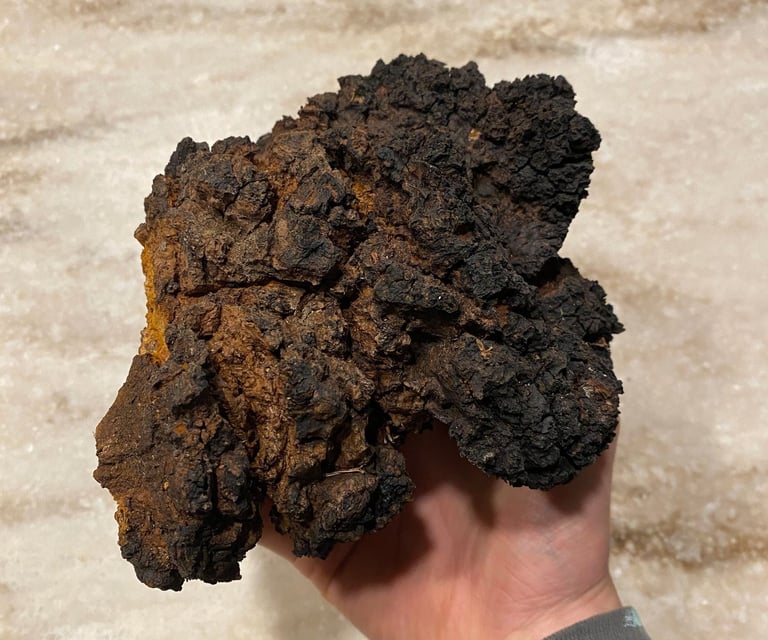

Inonotus obilquus

Turkey Tail
The mushroom's name aptly describes is beautifully banded fan shape of many colors, often including browns, grays, and tans augmented with blue, purple, and/or orange. It is a relatively thin polypore.
They can be found fresh on fallen logs or standing snags most often in fall but sometimes spring. They will persist on their host wood and the colors will fade overtime.
Turkey tail can be distinguished from false turkey tail by to key characteristics. False turkey tail has pores on the underside that are so minute they cannot be seen with the naked eye (you may want to put on your glasses).
True turkey tail will also be growing more closely and clustered with fans bleeding into one-another, while false turkey tail will be more individually spaced and tents curl up like chips with age.
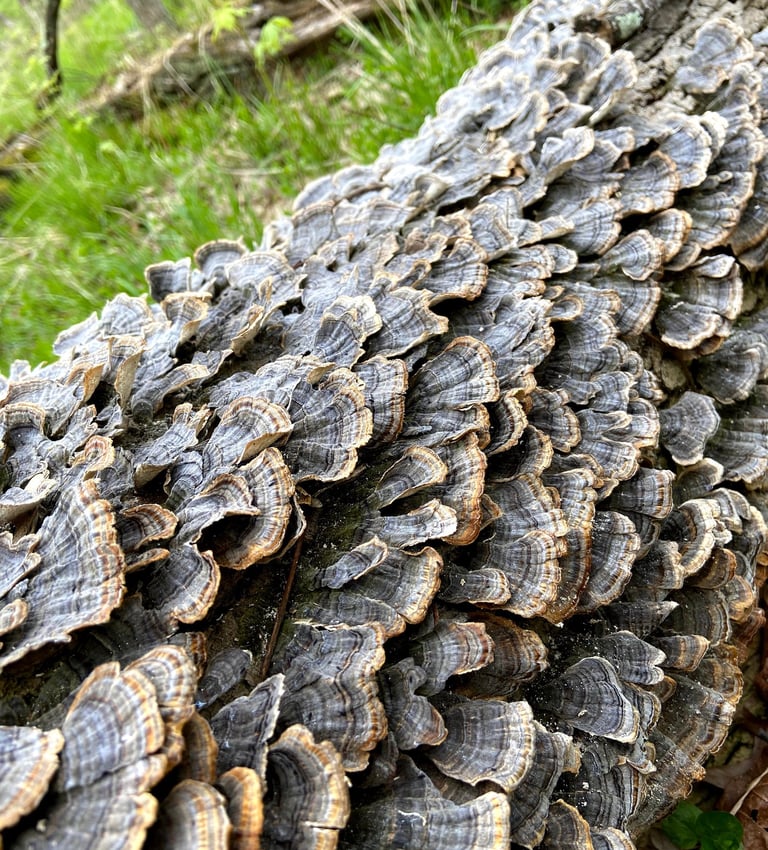

Trametes versicolor
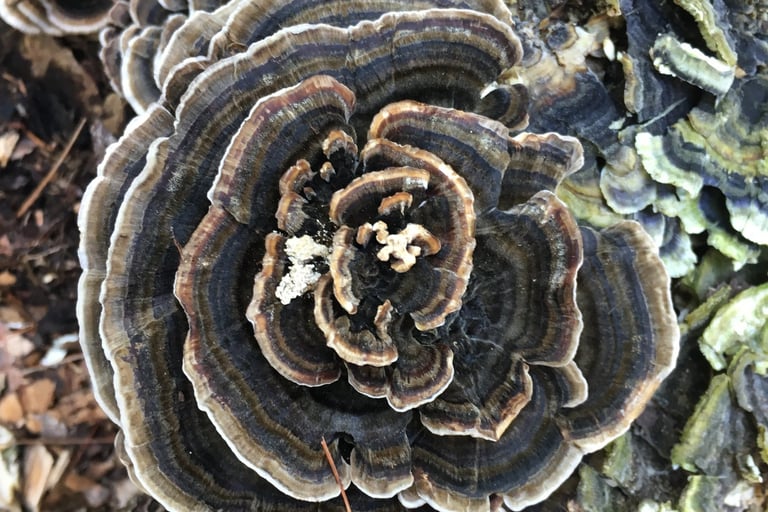

Because of its tough woody nature, turkey tail is typically used as a tea or tincture. Its anticancer properties are widely accepted and they are sold at pharmacies in eastern countries such as China and Japan. The immune-boosting capabilities make it a welcome member of our ever popular Mushroom Dream Tea.
Turkey tail is also a core component of our Forager's Five immune-boosting tincture which includes five of the most potent local medicinal mushrooms: Chaga, Lion's Mane, Maitake, Reishi, and Turkey Tail.





